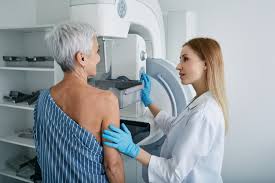Breast cancer outcomes often depend on how early the disease is identified. One of the most widely used tools for early detection is the mammogram. This imaging method gives healthcare providers a clearer view of breast tissue, often revealing changes before a lump can be felt. For many, it becomes a reliable part of routine health care, especially as they move into their 40s and beyond.
A mammogram uses low-dose X-rays to capture images of the breast. These images are reviewed for abnormal areas that could suggest early stages of cancer. Because many breast cancers do not cause pain or noticeable symptoms at first, this approach gives people a critical advantage—time to act before the disease spreads.
Identifying Changes Before Symptoms Appear
Mammograms are often able to detect abnormalities years before physical symptoms surface. This gives individuals and their providers a chance to discuss next steps while treatment options remain less invasive. When breast cancer is found early, the five-year survival rate improves significantly, and more treatment choices become available.
Routine screenings offer a timeline of breast health. When a new image is compared to earlier results, radiologists can notice subtle changes. Even small shifts in tissue can lead to further testing and prompt diagnosis.
Knowing How Mammograms Fit Into Routine Care
For people at average risk, most guidelines recommend beginning routine mammogram screenings by age 40 to 50. After the first scan, providers use risk factors, age, and health history to decide how often future screenings should take place. In many cases, an annual schedule helps keep results current and comparisons accurate.
Primary care providers often help coordinate mammogram appointments as part of wellness visits. For those with a family history of breast cancer or other risk indicators, providers may recommend beginning screenings earlier or increasing their frequency.
Imaging technology continues to evolve, offering clearer views and better precision. Many providers now offer 3D mammograms, also known as tomosynthesis. This version creates detailed layers of breast tissue images, making it easier to detect small tumors in dense tissue.
These advancements help reduce the chances of needing a follow-up scan due to unclear images. They also improve the ability to distinguish between harmless tissue variations and signs of disease. As a result, people experience less anxiety from uncertain results and providers gain more confidence in the findings.
Supporting Peace of Mind Through Knowledge
A key benefit of regular mammogram use is the clarity it brings to breast health. Many individuals feel more prepared to make health decisions when they have access to consistent and objective results. Even when results are normal, the process helps maintain awareness and reinforces self-monitoring between screenings.
If the mammogram shows an irregularity, additional steps are taken. These can include more focused imaging or a biopsy. When these follow-up procedures are part of a system built around early detection, outcomes often improve. Early-stage breast cancer treatments may be shorter and more effective, with less need for aggressive approaches.
Addressing Misconceptions and Hesitation
Despite strong support from the medical community, some people avoid mammograms due to fear, discomfort, or confusion about guidelines. Clear communication from primary care providers helps address these concerns.
When individuals understand how mammograms work and how they can benefit from early detection, they are more likely to make screening a routine part of care. Clinics often work to reduce barriers by offering accessible locations, flexible scheduling, and calming environments. Many also provide assistance in understanding insurance coverage or financial support options for uninsured individuals.
Make Mammograms a Long-Term Habit
Staying consistent with mammogram appointments over time improves their effectiveness. Each scan builds on a personal health history, offering a timeline that supports accurate assessment. Over the years, this pattern creates a reliable record that providers use to track and interpret changes more precisely.
Regular screenings are not only a check for problems—they are part of a larger plan to protect health through steady monitoring. By including mammograms in this long-term strategy, people strengthen their chances of catching disease early, when care is most manageable.
Related Articles
Why Private Medical Practices Focus on More Personalized Patient Relationships
How To Choose Between Simple and Surgical Tooth Extractions
Differences Between a Pediatric Root Canal and an Adult Root Canal
The Truth About Teeth Whitening: What Works and What Doesn’t





